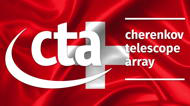Speaker
Description
Compact Galactic binary systems with orbital periods of a few hours are expected to be detected in gravitational waves (GW) by LISA or a similar mission. At present, these so-called verification binaries provide predictions for GW frequency and amplitude. A full polarisation prediction would provide a new method to calibrate LISA and other GW observatories, but requires resolving the orientation of the binary on the sky, which is not currently possible. We suggest a method to determine the elusive binary orientation and hence predict the GW polarisation, using km-scale optical intensity interferometry. The most promising candidate is CD–30◦ 11223, consisting of a hot helium subdwarf with 𝑚𝐵 = 12 and a much fainter white dwarf companion, in a nearly edge-on orbit with period 70.5 min. We estimate that the brighter star is tidally stretched by 6%. Resolving the tidal stretching would provide the binary orientation. The resolution needed is far beyond any current instrument, but not beyond current technology. We consider scenarios where an array of telescopes with km- scale baselines and/or the Very Large Telescope (VLT) and Extremely Large Telescope (ELT) are equipped with recently-developed kilo-pixel sub-ns single-photon counters and used for intensity interferometry. We estimate that a team-up of the VLT and ELT could measure the orientation to ±1◦ at 2𝜎 confidence in 24 hours of observation.
